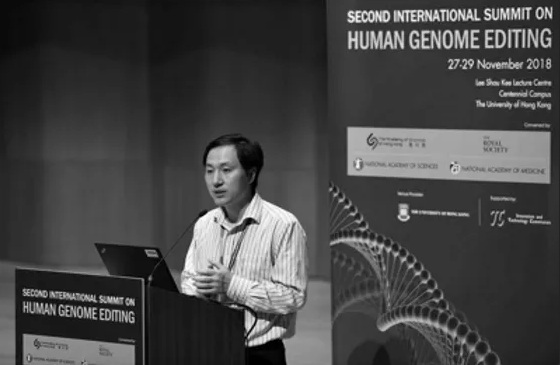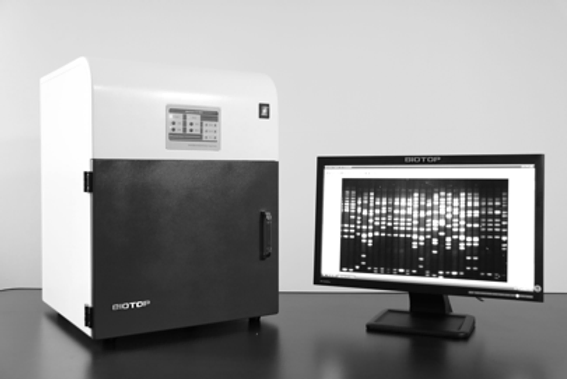In an era where CRISPR-Cas9 gene technology has achieved groundbreaking advancements, scientific knowledge and ethical boundaries are constantly evolving. This development ignites the human imagination and pursuit of an ideal life form - a journey marked by boundless freedom and daring exploration. However, this journey is not without its perils. The seductive power of such progress leads humanity down a path where the lines between playing God and becoming one are increasingly blurred.
This raises a pivotal question: Will the future bring final judgment or ultimate liberation?
Installation View, Mix Media, Wood Sculpture, 3D Scan, LED, 2020
THE ETHICAL CROSSROADS
CRISPR-Cas9, a significant advancement in the field of genome editing, was first successfully adapted for genome editing in eukaryotic cells in January 2013. It stands out due to its enhanced convenience, effectiveness, and cost-efficiency, playing a pivotal role in propelling gene therapy toward revolutionary advancements. A notable instance highlighting the impact of this technology was the birth of Lulu and Nana in November 2018, the first genetically edited babies in the world. Their case, involving gene editing to confer resistance to HIV, ignited widespread debate across academic and societal spheres, raising profound ethical concerns.
This development prompts critical inquiries about the future trajectory of biotechnological advancements. Questions arise such as: What limits, if any, exist in technology's pursuit of human perfection? How far will the capabilities of genetic engineering extend in terms of efficiency and precision in medical treatments and human body modifications?


'PERFECTION'
At the beginning of the 20th century, Francis Galton coined the term "innately good," leading to the rise of the popular eugenics movement. This movement involved practices like measuring human skulls to identify brain regions associated with criminal behavior, aiming to eliminate such traits.
Eugenics proclaimed the superiority of Caucasians, derogatorily labeling Africans and Asians as Neanderthals and Mongolians, in an effort to preserve the "purity" of the white gene pool. This ideology contributed to the genocide during World War II and bears relevance to modern genetic intervention in human embryos. Ancient beliefs held that perfection was an ideal concept, with God and nature as the ultimate models. Human thoughts and actions were expected to align with nature. In contrast, modern views on perfection are more open-ended, often reversing the relationship between humanity and nature, and expecting nature to conform to human designs. The rapid development of biotechnology and genetic engineering brings new ethical dilemmas in human relationships.
The parental bond with gene-edited babies has transformed into a relationship akin to designer and designed. This interference in future generations challenges the principles of freedom and equality, as future individuals may not see themselves as the sole authors of their life stories. Moreover, there's a looming question: Will the characteristics of the human body and nature gradually become commodified and standardized, potentially diminishing uniqueness?
THE BLURRY RED LINE
In the dynamic interplay of technology and cognition, ethical and moral landscapes are in constant flux, reshaping our understanding of life parallel to scientific advancements. Historically, significant milestones mark this evolution: Vesalius's dissections, Darwin's natural selection, and the decoding of the human genome. Each milestone unraveled life's enigmas through science.
Originally, in the 'man is made by God' era, reverence for nature and adherence to religious doctrines shaped human thought and action. The 'man is made by nature' period, highlighted by evolutionary theory, demystified life through scientific inquiry. Currently, in the 'God is made by man' phase, technology empowers humans to override natural laws, exemplified by synthetic organisms like "Cynthia" and gene-edited babies. These developments open new domains, making previously unexplored aspects of life accessible and challenging established norms and perceptions.
REMODELING
The sculpture's remodeling in this work traces its origins to the earliest gallows, specifically the Garrotte, utilized in the first century A.D. and notably used as the official instrument of torture during the Spanish Inquisition. Historically, hangings were a common method of executing prisoners, becoming a standard and public spectacle in medieval Spain, often infused with ritualized performances.
This instrument of torture, beyond its technical and ritual symbolic significance, was also a means of bodily and mental transformation. This concept parallels the transformation of human life through science and technology. In sculpting, techniques like the choice of wood materials and craftsmanship are employed. These elements are strategically juxtaposed to metaphorically explore the dialectical relationship between humans and technology and ethics and morality.
DIGITAL REINTERPRETATION
This work explores the blurred lines between reality and virtuality. It employs an AI image depth algorithm to recreate a sculpture in three-dimensional space, merging it with elements from historical, medical, and punitive sources to create a nuanced model.
This method aims to reflect the complexities of human existence in the context of technological advancement. By juxtaposing various forms and concepts, it prompts a contemplation of the ethical implications and relationships between humanity, technology, nature, and artificiality.
